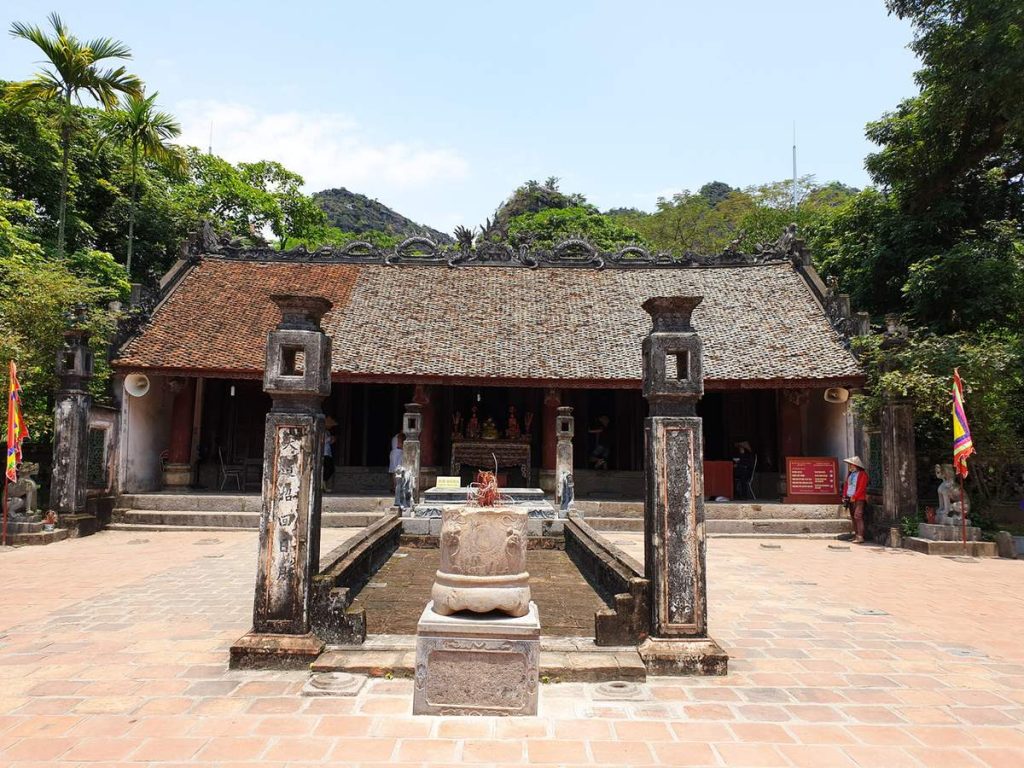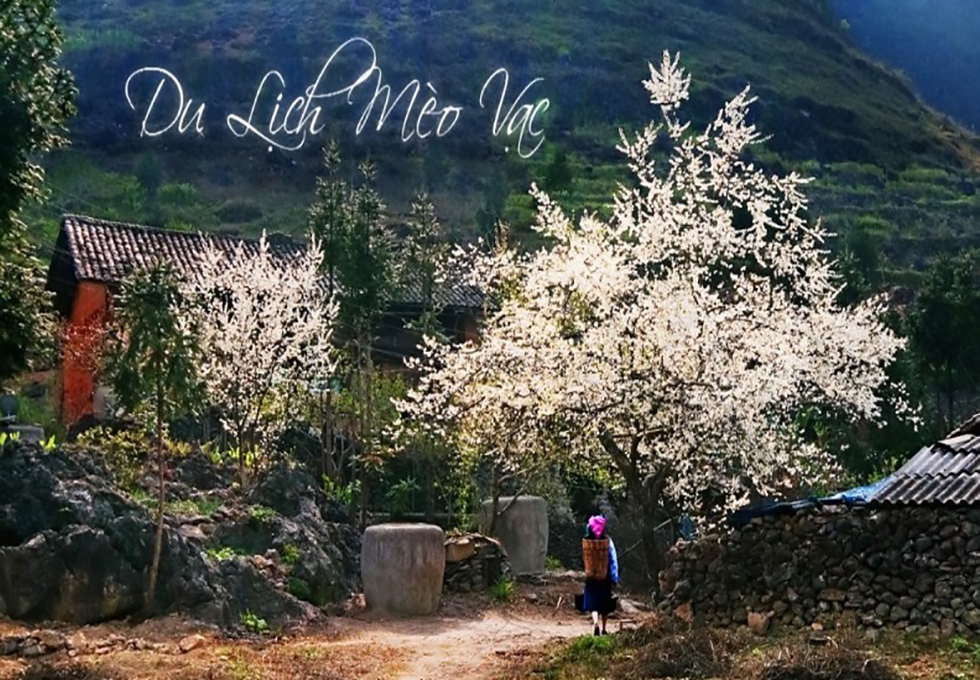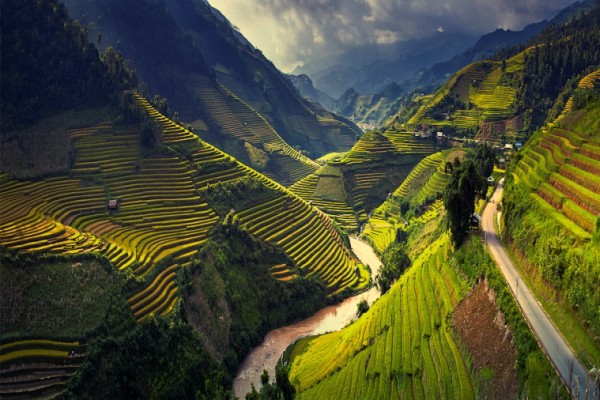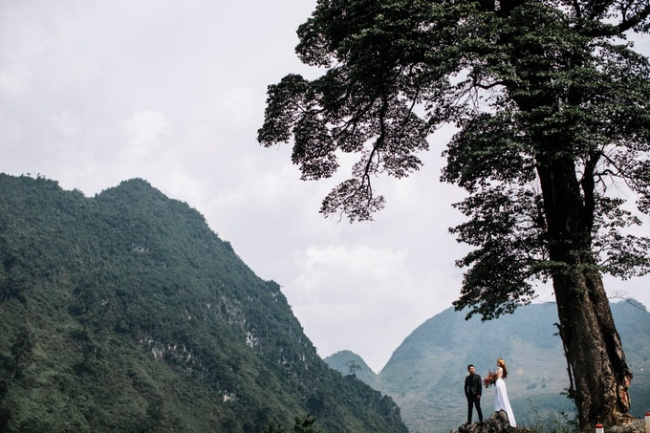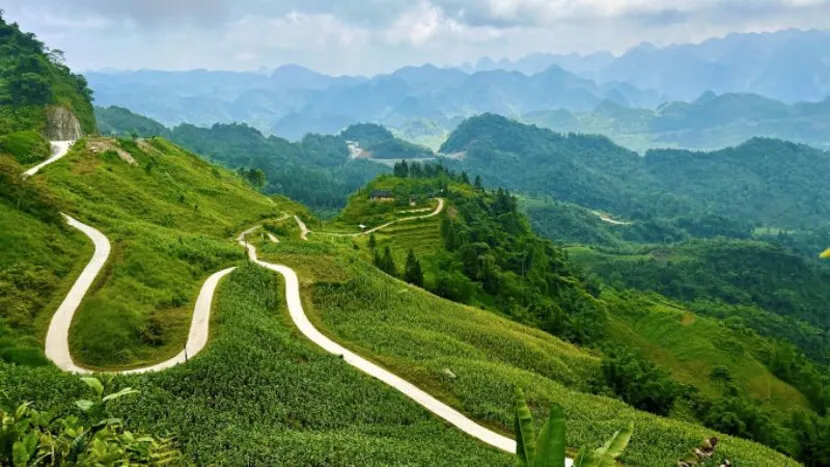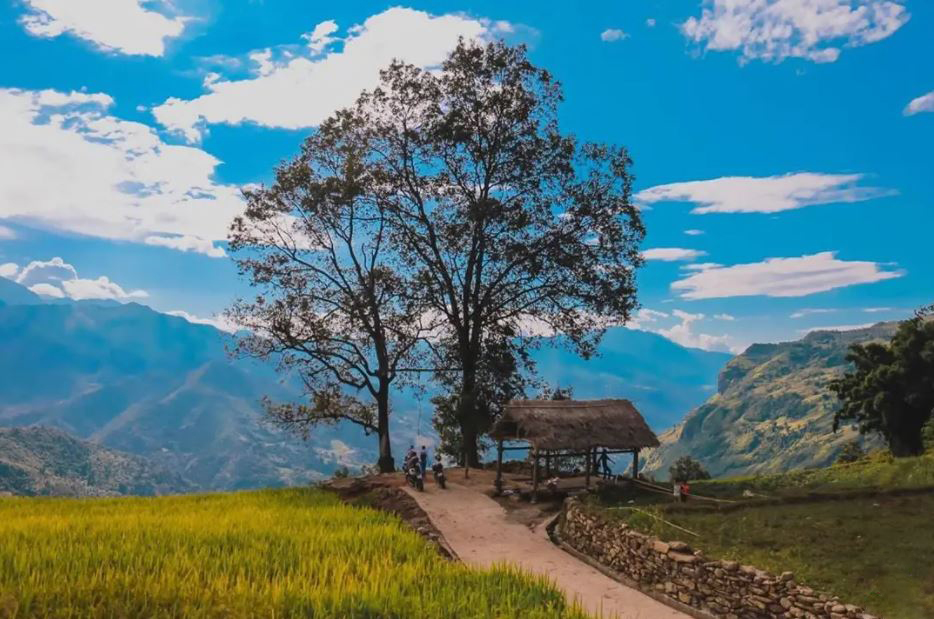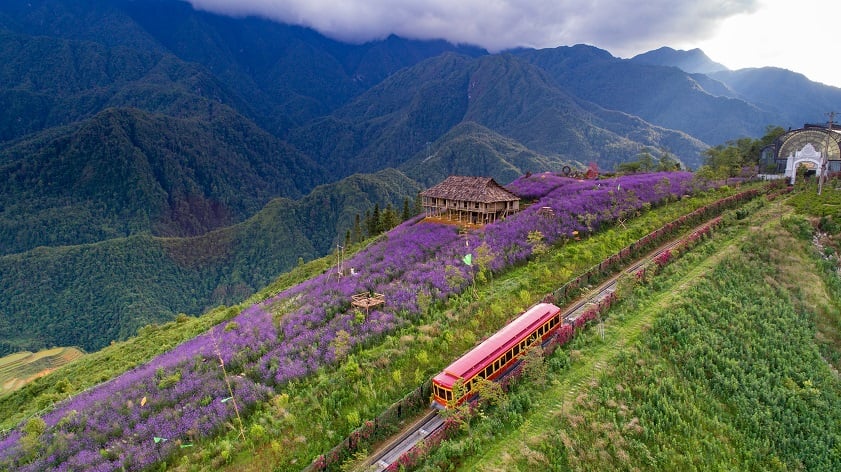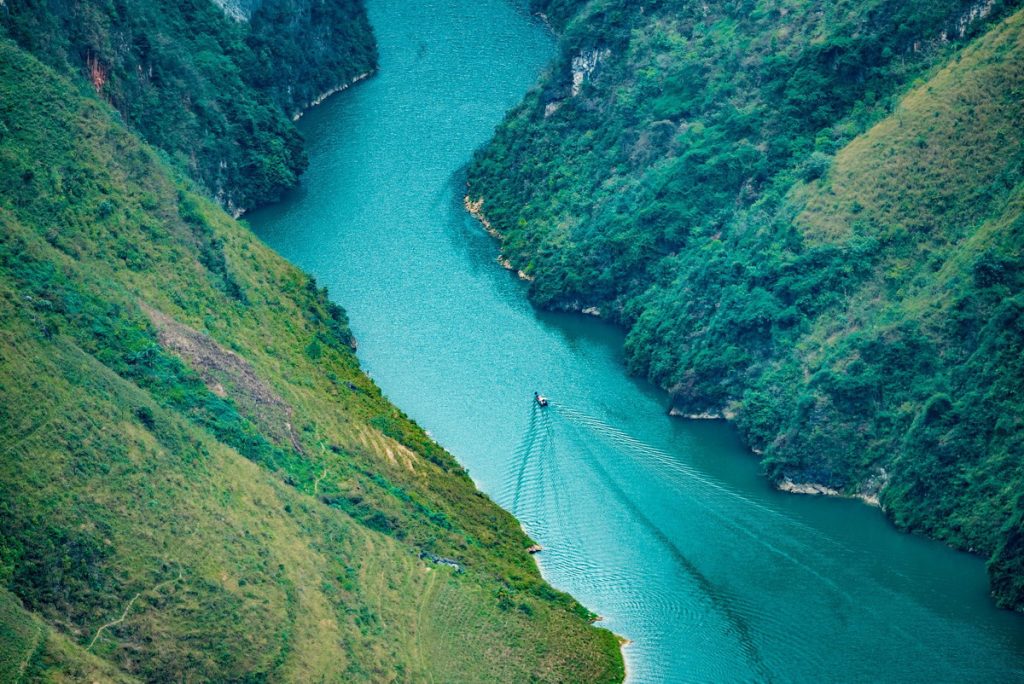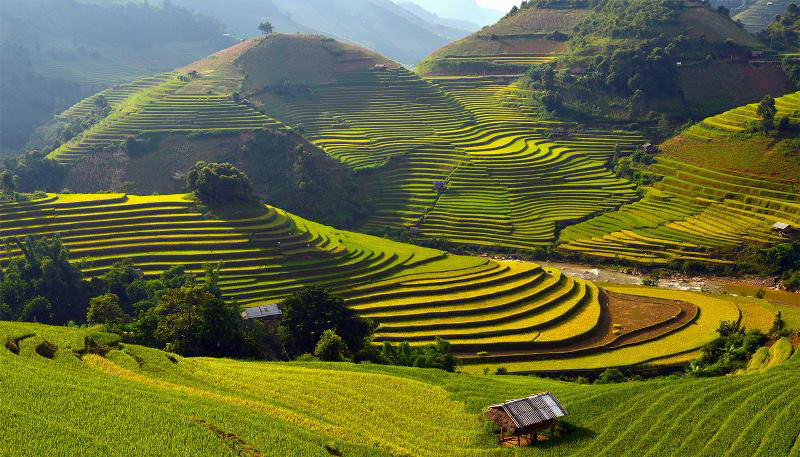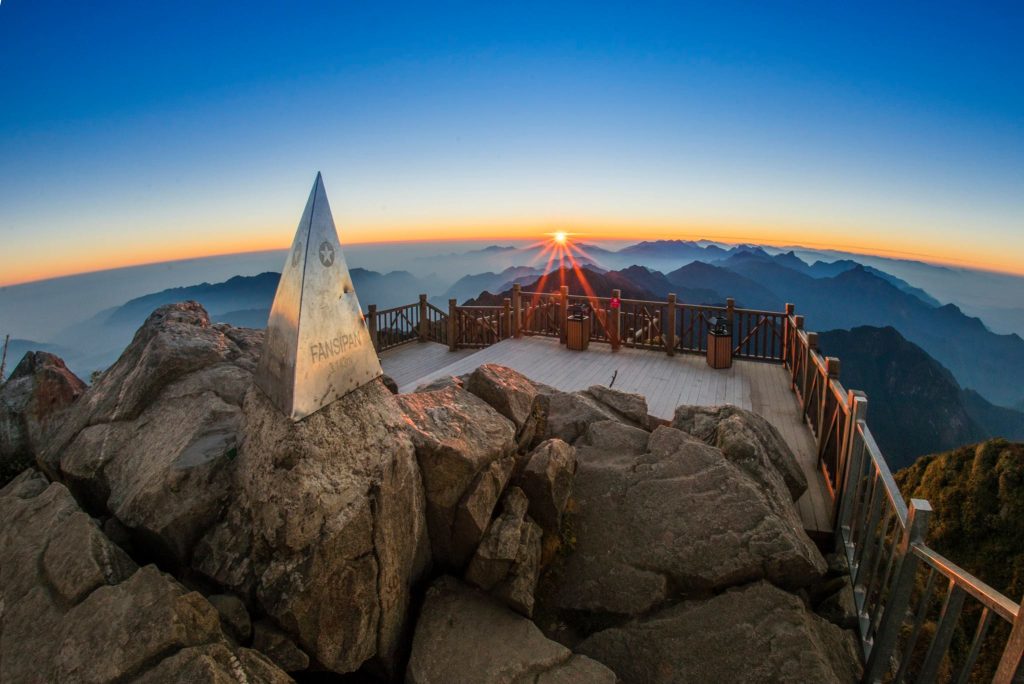Du Gia peacefully on the rocky plateau
Du Gia in Ha Giang Province, Vietnam, is renowned for its spectacular natural landscapes and rich cultural diversity. Nestled within the Dong Van Karst Plateau Geopark, it boasts towering limestone mountains, deep valleys, and cascading rice terraces. The commune is home to various ethnic groups like the H’mong, Tay, and Dao, each contributing unique traditions and vibrant festivals. Key attractions include the famous Ma Pi Leng Pass, offering breathtaking views of the Nho Quế River, and the historic Lung Cu Flag Tower marking Vietnam’s northernmost point. Visitors can explore Dong Van Ancient Town with its traditional architecture and bustling markets. Outdoor enthusiasts can indulge in trekking amidst stunning scenery and immersing in local village life. Accessible via road from Hà Giang City, Du Già is best visited during the dry season for favorable weather and optimal travel conditions.
I. When is the best time to visit Du Gia?
The best time to visit Du Gia in Hà Giang Province is during the dry season, which typically spans from October to April. This period offers the most favorable weather conditions for traveling and outdoor activities. Here are some reasons why this time is ideal:
- Weather: The dry season generally brings cooler temperatures and lower humidity, making it more comfortable for trekking, hiking, and exploring the outdoors.
- Scenery: The landscape in Du Gia, including its terraced rice fields and limestone karsts, is especially picturesque during this time. The rice fields are typically lush green after planting and turn golden before harvest, providing stunning vistas for photography.
- Road Conditions: The roads leading to Du Gia can be challenging during the rainy season due to mudslides and slippery conditions. In the dry season, road travel is safer and more convenient.
- Festivals and Cultural Activities: Many traditional festivals and cultural events take place during this time, offering visitors a chance to experience the local customs and traditions of ethnic minority groups such as the H’mong, Tay, and Dao.
Overall, October to April is recommended for visiting Du Gia to make the most of the region’s natural beauty, cultural richness, and comfortable weather conditions.
II. What to do in Du Gia?
In Du Gia in Hà Giang Province, Vietnam, there are several activities and attractions that visitors can enjoy:
- Explore Ma Pi Leng Pass: This famous mountain pass offers breathtaking views of the Nho Quế River winding through steep limestone cliffs. It’s a must-visit for its stunning scenery and photo opportunities.
- Visit Lung Cu Flag Tower: Located nearby, this tower marks the northernmost point of Vietnam. Climb to the top for panoramic views of the surrounding countryside and learn about the local significance of this landmark.
- Discover Dong Van Karst Plateau Geopark: Du Gia is part of this UNESCO Global Geopark known for its unique geological formations, biodiversity, and cultural diversity. Explore the diverse landscapes, including limestone karsts and traditional ethnic villages.
- Experience Ethnic Minority Culture: Interact with local communities such as the H’mong, Tay, and Dao. Visit their villages, experience traditional homestays, and learn about their customs, traditions, and handicrafts.
- Trekking and Hiking: Enjoy trekking through the scenic countryside and along terraced rice fields. There are various trails and routes suitable for different fitness levels, offering opportunities to immerse yourself in nature and local life.
- Visit Dong Van Ancient Town: Explore this well-preserved town with its traditional architecture, ancient houses, and lively markets. It’s a great place to shop for local products and witness daily life.
- Attend Local Festivals: Depending on the time of year, you might have the chance to participate in or witness traditional festivals and celebrations, which are vibrant and colorful affairs showcasing the rich cultural heritage of the region.
- Photography: Du Gia offers countless opportunities for photography enthusiasts, from the dramatic landscapes to the colorful traditional costumes of the ethnic minorities.
- Enjoy Local Cuisine: Taste local dishes and specialties, which often include fresh ingredients sourced from the surrounding mountains and valleys. Don’t miss trying regional favorites like Thắng Cố (horse meat salad) and Thắng Cố Phặc (horse meat hot pot).
Overall, Du Gia is a destination where you can immerse yourself in natural beauty, cultural diversity, and outdoor adventures, making it an ideal place for travelers seeking an authentic and enriching experience in northern Vietnam.
III. How to get to Du Gia?
Getting to Du Gia in Hà Giang Province involves traveling through northern Vietnam, typically starting from Hanoi. Here are the main transportation options:
- By Road:
– From Hanoi: The most common route is to travel by road from Hanoi to Hà Giang City, the provincial capital. This journey takes approximately 6-8 hours, covering a distance of about 300 kilometers (186 miles). The road passes through scenic landscapes and mountainous terrain.
– From Hà Giang City to Du Gia: From Hà Giang City, you can continue by road to Du Gia commune. The journey typically takes around 2-3 hours, depending on road conditions.
- Public Transport:
– Bus: There are daily buses from Hanoi to Hà Giang City operated by several bus companies. From Hà Giang City, you can take local buses or minibusses (known as “xe ôm” or shared taxis) to reach Du Gia. Buses depart from My Dinh Bus Station in Hanoi.
– Motorbike Rental: Another option is to rent a motorbike in Hà Giang City and ride to Du Gia. This gives you flexibility to explore the area at your own pace.
- Private Transport:
– Car Rental or Private Transfer: For more comfort and convenience, you can arrange a private car rental or hire a local driver with a vehicle to take you from Hanoi directly to Du Gia. This option allows you to stop at scenic spots along the way and manage your schedule more flexibly.
- Considerations:
– Road Conditions: The roads leading to Hà Giang and Du Gia can be winding and narrow, particularly in mountainous areas. It’s advisable to check road conditions and weather forecasts, especially during the rainy season (May to September), when some routes may be affected by landslides or flooding.
– Travel Time: Plan your journey carefully, considering the distance and the time it takes to travel between Hanoi, Hà Giang City, and Du Gia. Start early in the day to allow for sufficient travel time and breaks along the way.
Overall, while the journey to Du Gia requires some planning, the scenic beauty and cultural richness of the region make it a rewarding destination for travelers seeking an authentic experience in northern Vietnam.
If you need more information, please contact us Mail: zgotravelvietnam@gmail.com or WhatsApp: +84 9766 09451.
By the way, a new beautiful place called Ha Giang loop which is very interesting, check this out: https://www.getyourguide.com/hanoi-l205/from-hanoi-3-day-ha-giang-loop-small-group-t739208
For Lan Ha Bay & Halong Bay trip, check this out: https://www.getyourguide.com/ha-long-l119790/from-ha-noi-2-day-lan-ha-ha-long-bay-5star-with-balcony-t739040/
Or https://www.tripadvisor.com/AttractionProductReview-g3737857-d28097153-Lan_Ha_Bay_Ha_Long_Bay_5_Stars_Private_balcony_2_days_trip-Tuan_Chau_Island_Halon.html

